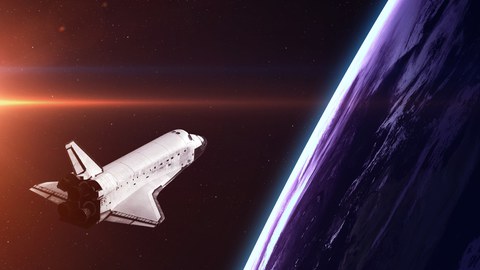Launcher and Spacecraft Control
Table of contents
Worst-Case Aerodynamic Loads Calculation of Space Launchers:
During the atmospheric ascent, the structure of space launchers must sustain extreme aerodynamic loads. These are most critical in the lateral direction and caused mainly by gusts or deviations from the reference trajectory. The structural limit allowable loads impose a rigid flight envelope. Under any possible wind and trajectory disturbances and significantly uncertain dynamics, the flight control system must maintain the launcher inside this envelope. The state-of-the-art approaches for controller validation are simulation-based Monte Carlo analyses and worst-case optimizations of the nonlinear model. However, these methods are computationally expensive. Moreover, they can only provide lower bounds or probabilistic information on the worst-case loads. An alternative provides linear time-varying worst-case analyses conducted on linear surrogate models, which efficiently calculate guaranteed analytic worst-cases.
Research Staff: Felix Biertümpfel
Selected Publications:
- Biertümpfel F., Gkoutzos D., Levi D., Valderrama J., and Pfifer, H., "Integral Quadratic Constraint-Based Analysis of Launch Vehicles", ESA GNC-ICATT Conference, 2023. pdf
- Biertümpfel F., Bennani S., Pfifer H., "Time-Varying Robustness Analysis of Launch Vehicle Under Thrust Perturbations", Advanced Control for Applications, 2021. https://doi.org/10.1002/adc2.93, pdf
- Biertümpfel F., Bennani S. and Pfifer H., "Finite Time Horizon Analysis of Launch Vehicles Under Mass and Thrust Uncertainty", 21st IFAC World Congress, 2020, https://doi.org/10.1016/j.ifacol.2020.12.1296
- Biertümpfel F., Pfifer H. and Bennani S., "Finite Horizon Worst Case Analysis of Launch Vehicles", 21st Symposium on Automatic Control in Aerospace (ACA), 2019, /10.1016/j.ifacol.2019.11.065
Attitude Control of Spacecraft:
Observation satellites must fulfil stringent pointing requirements in order to produce high quality image data. For this purpose, they are equipped with attitude control systems. These control systems must operate accurately under varying system dynamics as well as complex environmental disturbances. To achieve optimal performance at all times, the controller must be able to adapt to changes in the spacecraft dynamics. Some of these changes result from measurable parameter variations, which can then be explicitly considered in the design and used for controller scheduling during operations. Moreover, the resulting controller must be robust towards uncertainty in the system dynamics over the satellite's life cycle. Given that satellite pointing performance requirements are frequency-based, robust control is the logical framework to directly incorporate the requirements into the design.
Research Staff: Emily Burgin
Selected Publications:
- Thiele F., Fernandez Imaña I., Juanpere X. M., and Pfifer H., "Adaptive Control for Vibration Attenuation of a Laser Communication Terminal", ESA GNC-ICATT Conference, 2023. pdf

